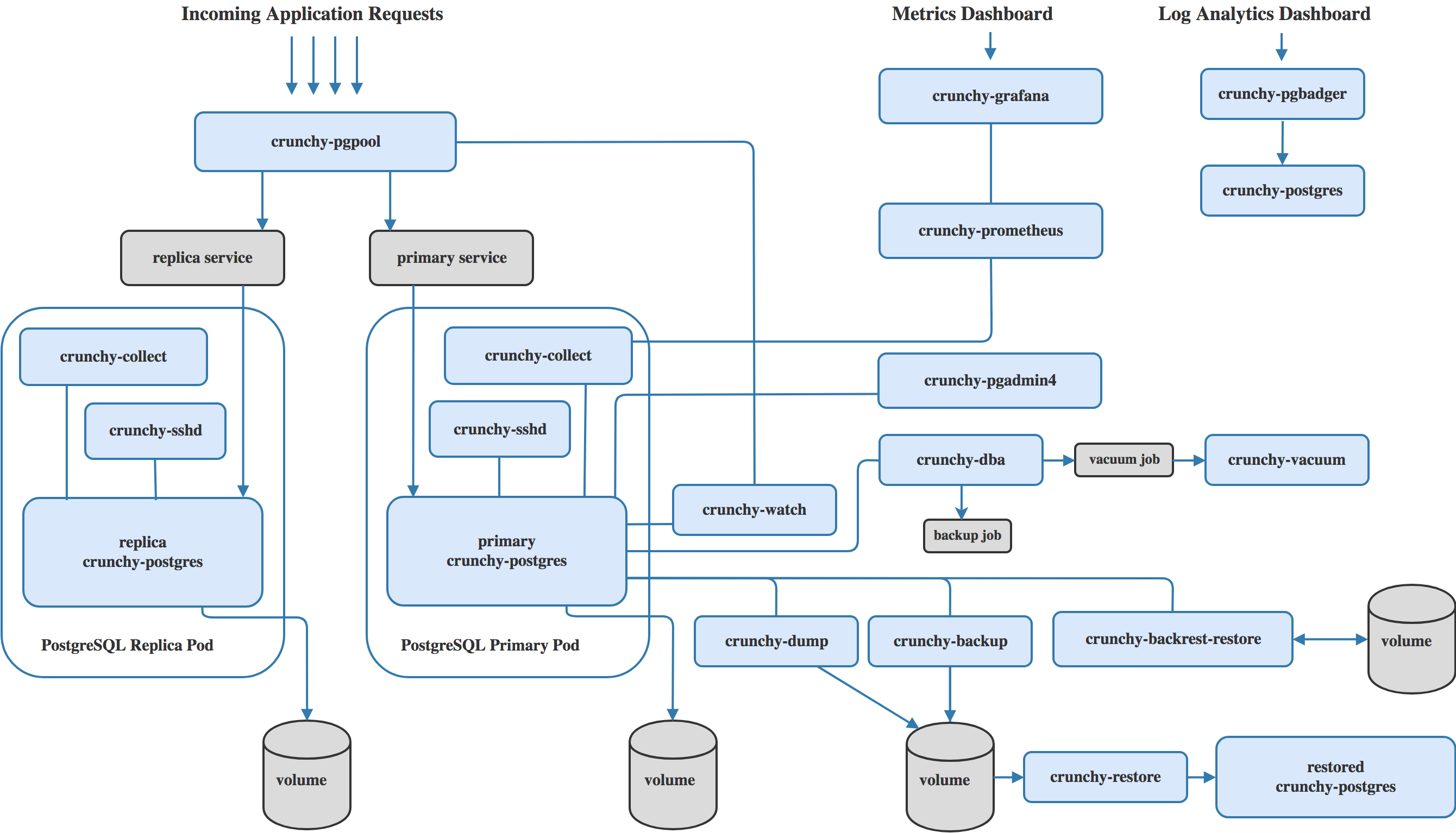| title | date | draft |
|---|---|---|
Crunchy Data Container Suite |
2018-04-23 14:52:09 -0700 |
false |
Latest Release: v1.8.3, 2024-01-08
General
Please view the official Crunchy Data Container Suite documentation here. If you are interested in contributing or making an update to the documentation, please view the Contributing Guidelines.
Warning: The master branch is considered unstable. Please consult the tagged release currently deployed in your environment.
What is the Container Suite?
The Crunchy Container Suite provides Docker containers that enable rapid deployment of PostgreSQL, including administration and monitoring tools. Multiple styles of deploying PostgreSQL clusters are supported.
Requirements
The containers will execute in the following environments:
-
Docker 1.12 and above
-
Openshift 3.4 and above
-
Kubernetes 1.5 and above
Containers
The project includes the following containers:
-
crunchy-postgres - executes Postgres
-
crunchy-postgres-gis - executes Postgres plus the PostGIS extensions
-
crunchy-backup - performs a full database backup
-
crunchy-pgpool - executes pgpool
-
crunchy-pgbadger - executes pgbadger
-
crunchy-watch - performs a form of automated failover
-
crunchy-collect - collects Postgres metrics
-
crunchy-prometheus -stores Postgres metrics
-
crunchy-grafana - graphs Postgres metrics
-
crunchy-pgbouncer - pgbouncer connection pooler and simple form of failover
-
crunchy-pgadmin4 - pgadmin4 web application
-
crunchy-dba - implements a cron scheduler to perform simple DBA tasks
-
crunchy-upgrade - allows you to perform a major postgres upgrade using pg_upgrade
-
crunchy-backrest-restore - allows you to perform a pgbackrest restore
-
crunchy-sim - executes queries over a specified interval range for Postgres traffic simulation purposes
-
crunchy-pgdump - provides a means of performing either a pg_dump or pg_dumpall on a Postgres database
-
crunchy-pgrestore - provides a means of performing a restore of a dump from pg_dump or pg_dumpall via psql or pg_restore to a Postgres container database
For Kubernetes users of these containers, there is an associated project worth taking a look at that uses the containers found in this repo and provides a higher level automation. That project is the postgres-operator.
Further descriptions of each of these containers and environment variables that can be used to tune them can be found in the Container Specifications document.
Getting Started
Complete build and install documentation is found here. The provided Dockerfiles build the containers on a Centos 7 base image and use the community PostgreSQL RPMs.
Crunchy provides a commercially supported version of these containers built upon RHEL 7 and the Crunchy supported PostgreSQL. Contact Crunchy for more details at http://www.crunchydata.com.
Usage
Various examples are provided in the Getting Started documentation for running in Docker, Kubernetes, and OpenShift environments.
You will need to set up your environment as per the Installation documentation in order to execute the examples.

